On June 27, 2023, the Lunar Exploration and Space Engineering Centre of the National Space Administration (NASA) announced the announcement of the sixth batch of lunar samples issuance, and Academician Xie Heping of our academy was successfully granted 100mg of Chang'e-5 lunar samples, which is also the first time for Shenzhen higher education and research institutes to be granted real lunar samples.On August 7, Academician Xie Heping, as the responsible person for the use of the lunar samples, on behalf of the user unit, Shenzhen University, went to the National On 7 August, Academician Xie Heping, as the person responsible for the use of lunar samples, went to the National Observatory of Shenzhen University on behalf of Shenzhen University to collect the lunar samples, and the precious lunar soil has been handed over to Academician Xie Heping's research team, which is the first time for Shenzhen to receive Chang'e-5 lunar samples.
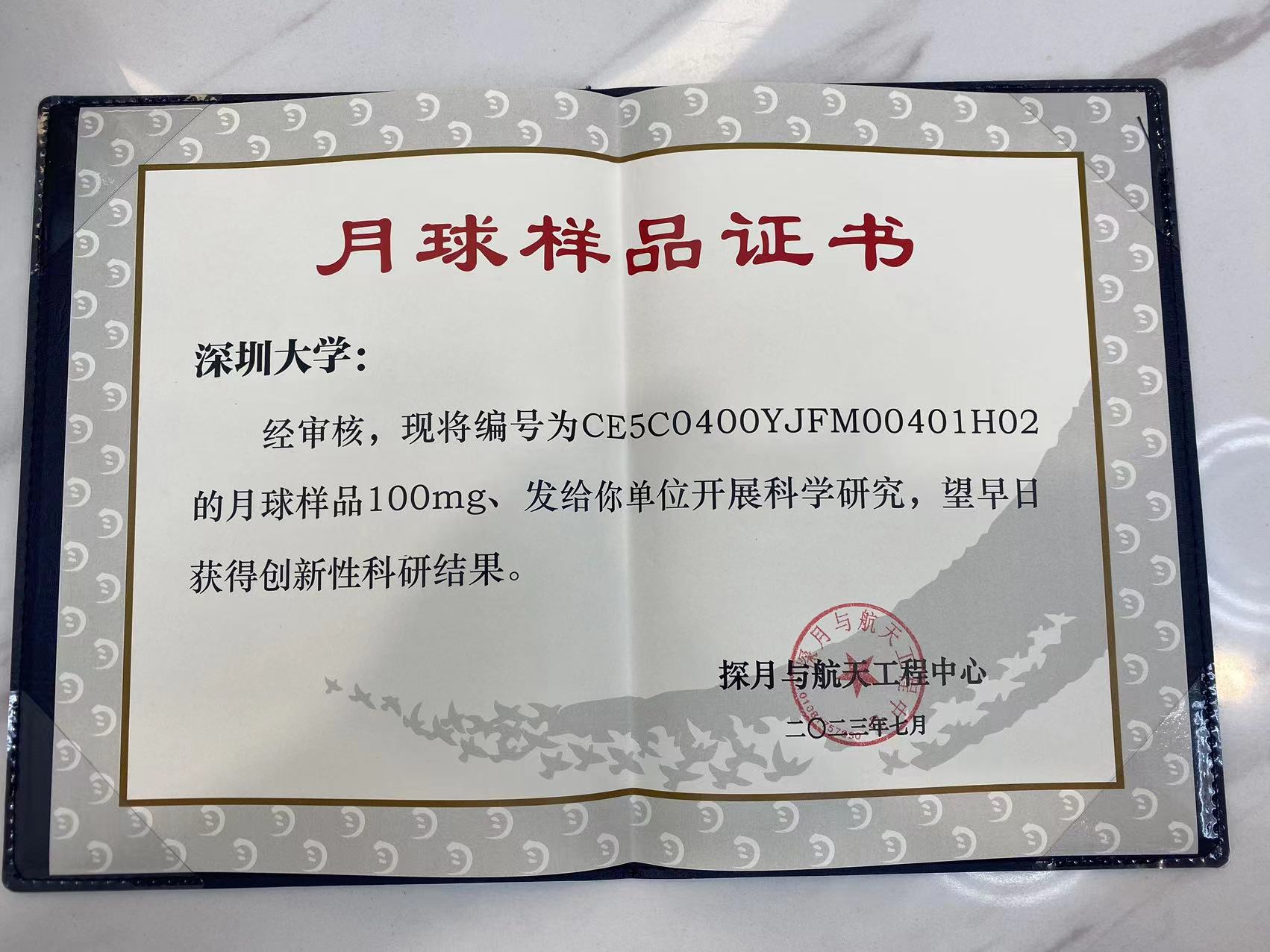
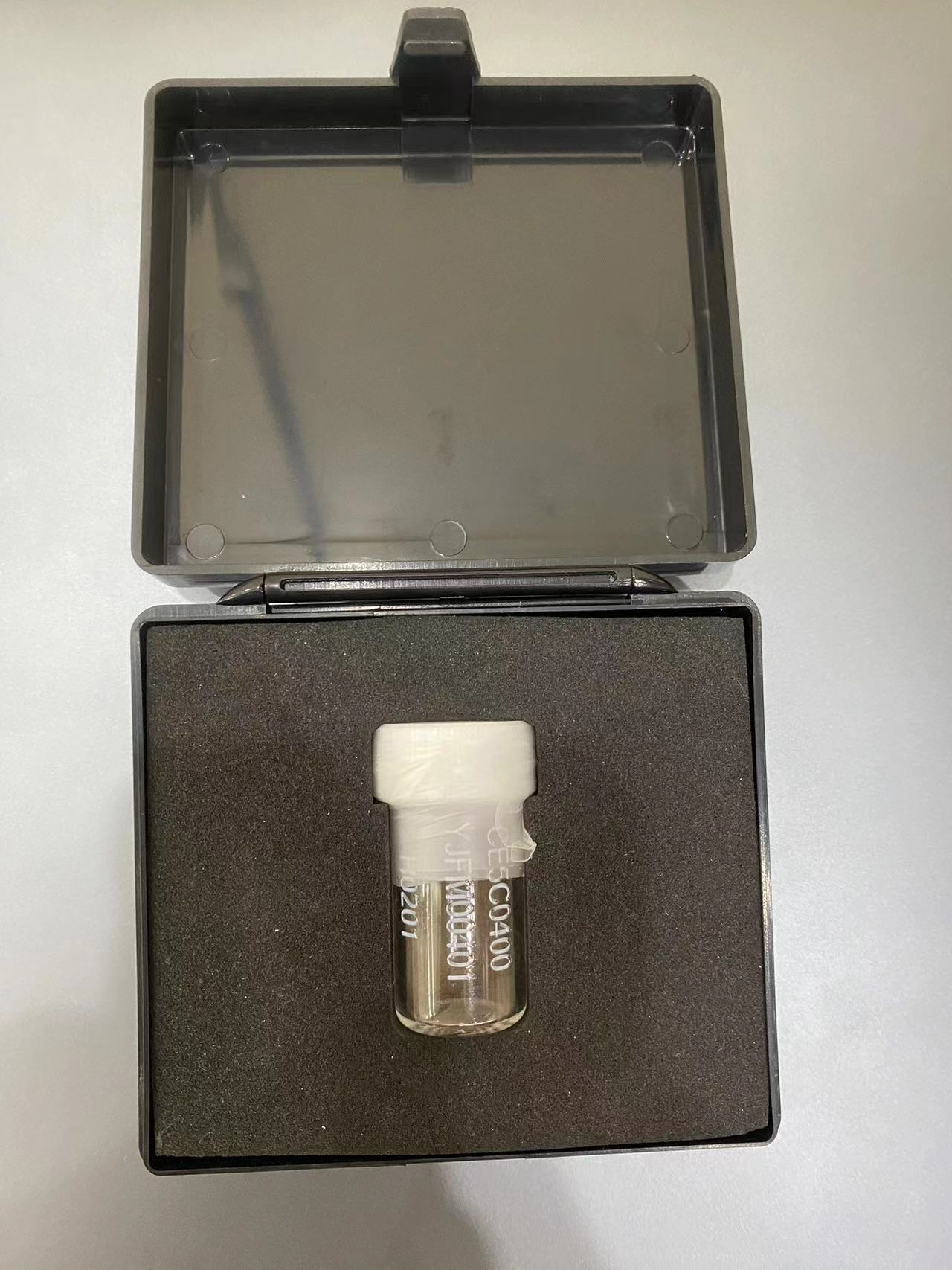
Figure 1 Lunar samples and certificates
In 2018, Academician Xie Heping's team proposed for the first time in the world the concept of "pressure preservation, heat preservation, quality preservation, moisture preservation and light preservation" coring to obtain the real physical parameters of the deep Earth, and independently developed the in-situ fidelity coring prospecting and fidelity testing and analysis system for deep rocks, which was funded by the major scientific research instrument project of the National Natural Science Foundation of China. On the basis of the development of major scientific research instruments, in response to the current situation of "not deep enough drilling, not true" in the international lunar coring, the research results were expanded to lunar coring prospecting, and the concept of lunar large-depth fidelity coring prospecting was put forward to obtain the lunar large-depth and in-situ "quality" and "location" parameters of deep rocks. The concept of lunar large-depth fidelity coring prospecting was proposed to obtain lunar large-depth and original "quality" and "location" fidelity samples, and to achieve a more accurate assessment of the lunar resource endowment. Experts from the National Lunar Prospecting Centre and other units have visited our university several times, listened to the reports on lunar fidelity coring prospecting and the use of lunar material resources and environmental resources, and provided guidance and strong support.2023 On 25 April, the Deep Space Exploration (Tiandu) Laboratory of the National Space Administration (NSA) and Academician Xie Heping officially set up the Scientist Workshop to conduct in-depth collaborative research on the basic scientific problems in the development of deep space material resources. co-operative research.
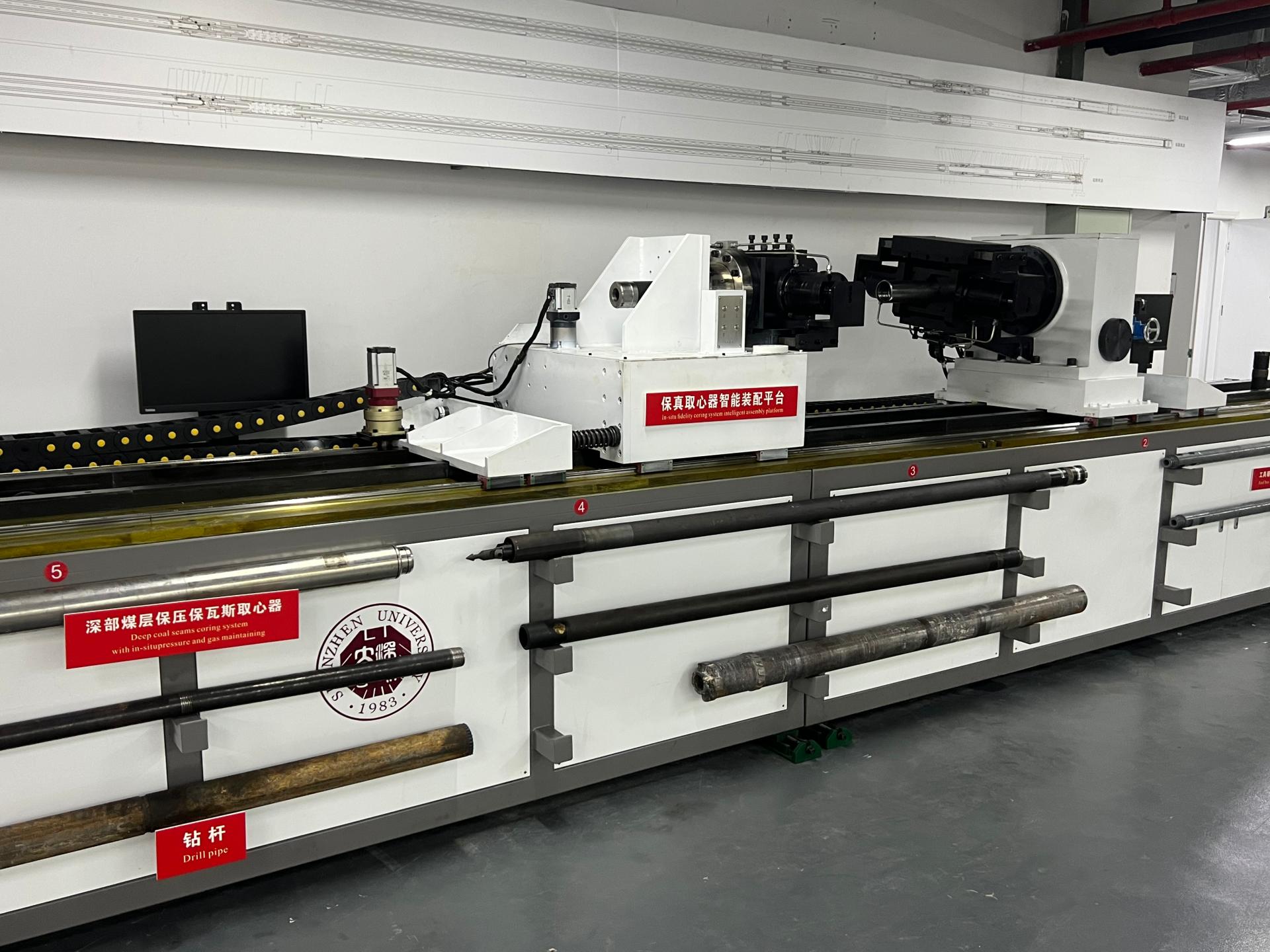
Figure 2 Deep Earth "Five Guarantees" (pressure, heat preservation, quality, light preservation, heat preservation) Core Prospecting Big Science Instruments
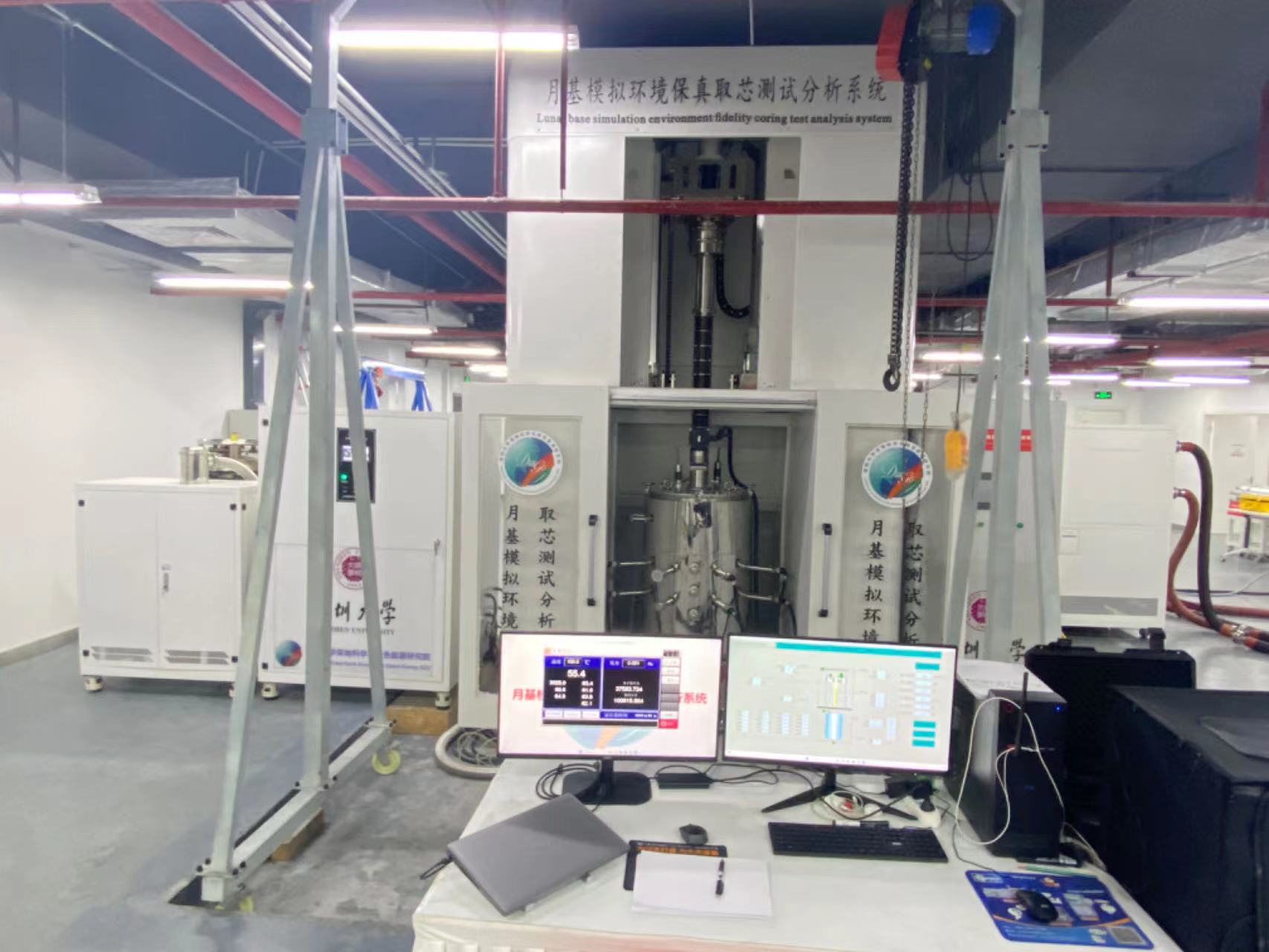
Figure 3 Lunar large-depth fidelity coring and prospecting simulator
According to the team's introduction, this lunar soil application mainly carries out research on the mechanism of force and heat transfer between lunar soil particles under the vacuum electromagnetic uplift environment in the deep space of the universe. The research team proposed for the first time in the international arena to establish the theoretical prediction model of irregular particle interaction based on quantum electrodynamics from the perspective of vacuum electromagnetic uplift, to attack and analyse the mechanism of force and heat transfer of lunar soil particles, and to try to explore the mechanism and law of the phenomenon that the lunar soil without liquid water on the lunar surface is paradoxically showing high adhesion only in the unsaturated soil on the ground as well as the phenomenon that the measurement of the heat flow on the Moon is showing obvious abnormality. From the perspective of lunar exploration project, this research is expected to establish a theoretical prediction model of particle interaction, providing a theoretical basis for the design of lunar soil-related projects; from the perspective of planetary science, this research can be extended to any material particle system in vacuum, providing accurate prediction and analysis of phenomena such as the growth of protoplanetary discs; from the perspective of quantum physics, this research can provide validation and prediction analysis of the vacuum electromagnetic uplift effect, and provide a new direction for the development of physics and mechanics. Provide a new direction for the development of physics and mechanics. The testing of real lunar soil samples in this application can provide basic parameter input and validation for the new analysis and calculation model of lunar soil force and heat transfer established by the team considering vacuum uplift, which is expected to explain planetary science phenomena such as protoplanetary disc growth, rubble pile asteroid stability, Apollo thermo-fluid meter anomaly and so on, and can also guide the design of deep-space engineering and prediction and analysis such as lunar landing, coring and prospecting, asteroid orbit control and so on.
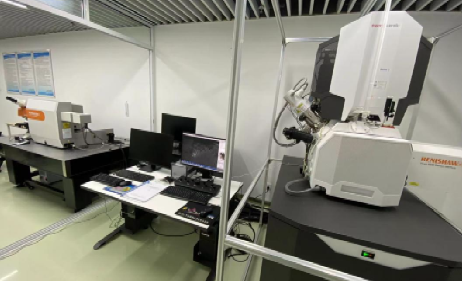
Figure 4 Deep space particle interaction force and heat transfer test system
It is reported that the National Space Administration (NASA) approved 60 applications from 16 scientific research institutes and colleges for the Chang'e-5 lunar samples after the evaluation by industry experts in communication, the evaluation by the Lunar Samples Expert Committee and the review by the Lunar Exploration and Space Engineering Centre (LESEC). China's lunar samples were collected and returned by Chang'e-5 on 17 December 2020, totalling 1,731g, which are the only real samples obtained by mankind from the Moon after the Apollo mission of the U.S. in the 1960s and 1970s and the Luna mission of the former Soviet Union, which are invaluable and have extremely important scientific research value.